|
I am very pleased to be
present today at 35th
Japan -IRRI Day.
Rice is consumed
regularly by people in Asia, Europe, America or Africa
but for Thais, it is more than just a side dish. Rice
has been our staple food for a long time. There are
evidences that in the area which is present day Thailand
rice had been cultivated from antiquities. For example
recently archaeologists found bricks of Dvaravati Period
(around the 6 th
century) covered with traces of shafts of glutinous
rice. Thai people have been growing rice for hundreds of
years but until the nineteenth century, mostly for
domestic consumption, because rice was regarded as major
war material prohibited from export except in years of
exceptionally good harvests, and event for that there
must be decrees permitting the export of surplus rice.
As late as the reign of King Rama III in the first half
of the nineteenth century we found decrees againt export
of rice on the ground that the country must maintain
sufficient rice reserve in case of wars. It was the
desire to break into the Thai rice market that led the
western countries to make consistent efforts in the
early Ratanakosin or Bangkok Period to negotiate with
the Thai Government to abolish monopoly and preventive
measures and to allow free export and import of rice.
Their efforts only succeeded in 1855 in the reign of
King Mongkut with the signing of Bowring Treaty with
Great Britain, other countries, and subsequently Japan.
So it can be said that rice was the main factor in
transforming Thai economy from subsistence to market
economy. To quote only a few statistics. starting
from almost zero in 1855 the figures of rice export rose
to 1.12 million tons in 1967 and reached the peak at
6.31 million tons in 1989.
The export stimulus led
to other developments. Expansion of cultivation area was
encouraged through exemption of taxes during the first
few years after bringing virgin lands under cultivation;
improvement in irrigation and transportation; and
measures to select and promote the best rice strains
through contests, the first national contest being held
in 1907. In 1916 the first rice experiment station was
set up. At the world's Grain Contest in Regina, Canada
in 1933, Thai rice made its name known in the world for
the first time. Pinkaew and other local varieties won
the first, second, third and eight other prizes out of
20 prizes given.
|
|
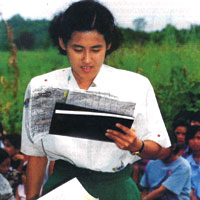
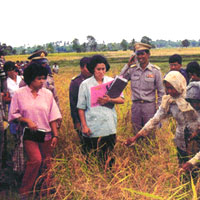
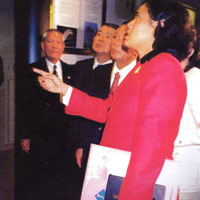
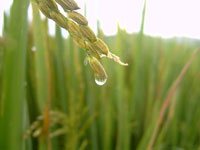
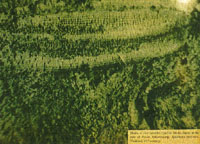
|